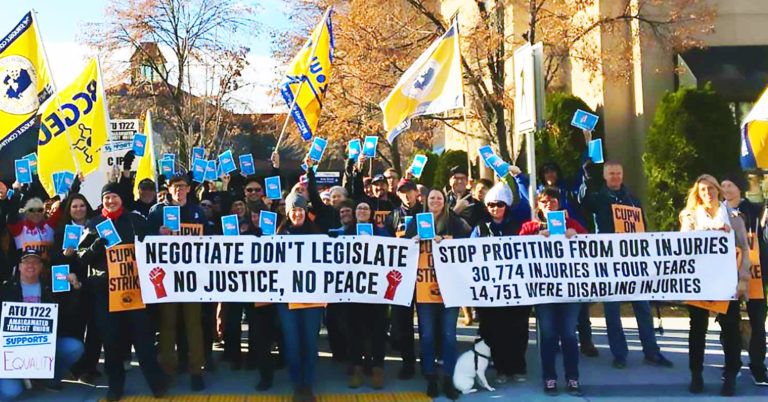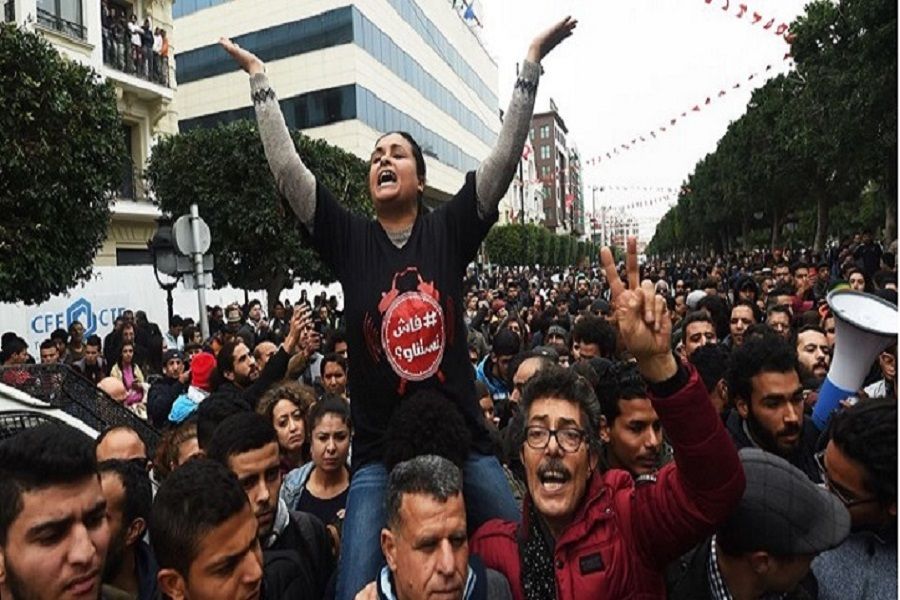This article is from the document on Canada agreed unanimously at Socialist Alternative’s recent conference.

SNC-Lavalin has dominated Federal politics this year. While the media has concentrated on the claimed undermining of the attorney general’s independence, it reveals the normal workings of government, constantly acting to support big business. In return, big business gives generously to its political friends. As Marx wrote, “The executive of the modern state is but a committee for managing the common affairs of the whole bourgeoisie.”
The SNC-Lavalin case demonstrates the realities of the Liberal government, in contrast to election rhetoric. Trudeau claimed to be a feminist and promised to change the electoral system, take action on the environment, respect unions, establish a new relationship with Indigenous peoples, introduce a new health accord with the provinces and contribute to a peaceful world. His actions on all of these do not measure up to the promises.
SNC-Lavalin has damaged Trudeau and the Liberals. Before the scandal the Liberals seemed on course to win this year’s elections. Now the Tories are in the lead. Women and young people voted strongly Liberal in 2015; will they switch to the Tories, the NDP, Greens or stay at home?
The Liberals still can turn things around, especially if the economy avoids a recession before the election. One of their strengths is the weaknesses of the Tories and NDP.
The Conservatives have been a weak opposition, hoping that the Liberals slip up and sneak a victory – SNC-Lavalin may be that slip. While generally Scheer has not followed Ford or Trump into right populism, he has used dog whistle phrases to attack refugees and others. Some Western Tory MPs are using SNC-Lavalin to stoke hostility towards Québec.
If Bernier’s right populist People’s Party (PP) takes support from the Tories, Scheer will shift rightward. A strong PP result would pull Canadian politics further right and give succour to the far-right, a threat that should not be ignored.
International
Inter-imperialist rivalries are growing especially between the US and China, with threats of trade wars and worse. This has already hit Canada, with China blocking canola imports worth $2.5 billion a year. While Canada avoided a major disaster over NAFTA’s replacement, it suffered a year of US imposed tariffs on steel and aluminum imports.
The world seems on the edge of a new recession with sluggish investment, and slowing economic growth and consumer spending in most countries. The Chinese growth is the lowest in 30 years. There is a worldwide mountain of debt, $US250 trillion, and many speculative bubbles, including housing, waiting to burst and trigger another financial crisis.
Political polarization continues with the weakening of traditional centre parties and the growth of new parties. While there have been important left movements, so far on the electoral field the new right generally has fared better than the left. The election of right populists usually provokes resistance from the working class and a growth of a radical left, as clearly shown in the US under Trump.
There is seething anger at inequality, discrimination and climate change with a growing tide of political action and demonstrations. Clearly women are rising internationally. The French Yellow Vests show society’s anger, with their demands for more taxes on the rich, for jobs and houses. The student strikes globally against climate change are inspiring.
Economy
Since 2010, Canadian GDP grew modestly, averaging 2.3% per year increase. This is far below the average of 5.3% growth from 1962 to 1973. Capitalism is in the era of sluggish growth.
Canadian big business has enjoyed large tax cuts; federal corporate taxes have been cut from 36% in the 1980s to 15% now. This has failed to produce the promised investment as corporations hoard around $700 billion rather than invest.
Growth slowed in the last year. Construction no longer drives the economy, with the housing and condo boom slowing. Manufacturing’s decline continues, dropping from 30% of GDP in the early 1950s to 10% in 2017. GM’s decision to end vehicle production at the Oshawa plant, and only keep 300 of the current 2,600 direct jobs, is a sign of this trend.
Officially unemployment is 5.8%, the lowest in 40 years. However, the reality is not so rosy. Self-employment, part-time work and precarious work have all grown significantly in the last 30 years.
In spite of high employment levels, wages are stagnant; in 2018 average wages went up 2%, less than inflation. Real median wages fell 0.3% between from September 2015 to September 2018. Even workers with steady jobs are not seeing rising living standards.
With inequality continuing to grow, the rich took most of the gains; the wealth of Canada’s 46 billionaires grew by $19.5 billion last year.
Stress
Canadian’s personal debt doubled in 20 years to $1.78 for every dollar of income. Stagnant wages, and the high cost of housing and education drive this. Many Canadians live paycheque to paycheque; 49% of Canadians are not ready for a financial emergency. This causes mounting stress with 45% of Canadians losing sleep worrying about money and 39% suffering negative health effects.
One in five Canadians will experience mental health problems or illness. People in the lowest income group are three to four times more likely than those in the highest income group to report poor mental health. Young people and women are also at higher risk.
Life is full of stress, insecurity and alienation. Neo-liberalism blames individual for problems, denying any social failings. An individual response to stress, low income, and life’s many other difficulties produces shame and ill-health. A collective response is anger at the system and struggle for change. Climate disasters add stress.
Struggle
While recently there have not been major struggles, there are increasing contradictions and growing tensions. Women and young people increasingly seek a different future from what is currently on offer.
Union density continues to be just over 30%. The unions in Canada have not suffered any major defeats, especially compared with workers in countries such as Britain, the US or Greece. Strikes remain at historic low levels. Between 2015 to 2018, there was an average of 1.2 million days per year lost in strikes. Between 1973 and 1979, the average was nearly 8 million days.
Alongside the low levels of strikes, there are fewer activists than in the past. Union leaders are unwilling to struggle, instead they increasingly put their hopes in lobbying governments or using the courts. After a lot of bluster, Unifor’s leadership accepted GM’s plan for only 300 jobs at Oshawa. Despite a decade of economic growth and low levels of unemployment, there is no sign of an increase in real wages. This is an ideal time to win better wages.
Workers have gained minimum wage increases with Alberta at $15, Ontario $14 and BC moving to $15 by 2021. But as Ford’s actions and Kenney’s threats demonstrate, these legal gains can be overturned.
The organized working class remains a powerful force. Union leaders cannot remove the reality of the workplace where the class divisions are most clear. Fundamentally, unions represent resistance to class oppression and are an expression of class conflict.
Canada’s public services are steadily undermined due to the tax cuts for the rich and corporations, which have reduced the federal government revenue by $40 billion a year compared, to the average of the last 50 years. Therefore, the federal government has less money for child care, pharmacare, building social housing or tackling poverty.
Vancouver has a growing housing struggle with the Tenants Union and Swanson’s election to city council. Tenants in Parkdale, Toronto have successfully resisted rent increases. PEI has a growing tenants’ movement.
Indigenous peoples’ resistance to ongoing colonialism and poverty includes a cultural renaissance, resistance to environmental destruction and demanding proper funding of resources on reserves.
Canada, compared to many other countries, came through the 2008 recession relatively undamaged, without a banking collapse, widespread deep austerity or a mass loss of homes. The next recession, however, may be very different. Canada is in a weaker position to weather the storms than in 2008.
Union leaders and the NDP are giving no warnings of what lies ahead for the working class. This leadership has more illusions in capitalism than the capitalists. This complacency risks leaving workers completely unprepared. A recession could initially stun workers as they try to cling on to jobs, their homes and living standards. After a time, the grim realities of the crisis will burn the widespread illusions of capitalist progress out of the outlook of millions.
While compared to other countries, Canada seems quiet; yet the anger and tensions continue to grow. Like a tightly-wound spring, at some point the potential energy becomes a reality.
Politics – A New Path Needed
From Alberta to PEI, there is a block of Conservative governments, most right populists. Most are firm supporters of fossil fuels and are planning major attacks on public services.
Right populism feeds on despair and frustrations, especially in small towns suffering from industry closures, in suburbs and among older, white people. It is rising in Canada and internationally. The populists use anti-elite rhetoric, and talk about jobs and defending Canadian values and culture (coded anti-Islam). They take advantage of the growing inequality and stagnant living standards. The Liberals provide no answers while the NDP has not provided a bold response.
The most dangerous trend at present is the weakness of the left. The right populists are making all the running with no counter from the left, a left that boldly talks about jobs, that is anti-elite, and that talks about ordinary people’s lives and needs.
The NDP continued to lose support since 2015 and so far Jagmeet Singh has not given the party a boost. There is huge political space to the left of the NDP. If the NDP shifted from dull safety to a bold left-wing program and went on the campaign trail, it could pick up seats collecting disillusioned Liberal votes. However, it appears more likely that it will drift to a further setback, with the almost complete loss of MPs in Québec and further decline across the country.
Given the lack of a radical stance from the NDP and disillusionment with the Liberals, the Greens could pick up seats. They are seen as new, radical and untainted with cynicism. However, based on BC’s experiences, they would not support radically different policies on the environment, workers’ rights or inequality.
Circumstances are favourable for a left movement. People are angry and there is a desire for left politics, as seen in Swanson’s Vancouver victory and recent polls showing 66% support for a Canadian green jobs program paid by taxing the rich and corporations. While the union leaders have no strategy to fight for good pay increases or to resist job cuts, the unions are still relatively strong. If even one or two NDP MPs broke ranks and boldly campaigned for green jobs, tax the rich, free education and a national housing program it would change the situation.
At some stage, the political vacuum on the left will be filled and a new left force will emerge. Socialist Alternative will work now and in the future to build both its strength and a powerful left voice in Canada. Clearly there is a need for socialist solutions to both the economic and ecological crises.



